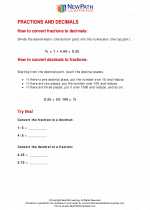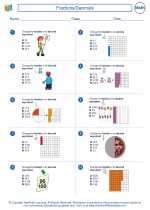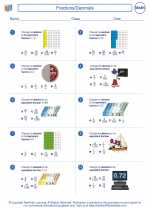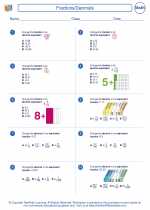Fractions and Decimals Study Guide
Introduction to Fractions
A fraction represents a part of a whole. It consists of a numerator (top number) and a denominator (bottom number). For example, in the fraction 3/4, 3 is the numerator and 4 is the denominator.
Converting Fractions to Decimals
To convert a fraction to a decimal, divide the numerator by the denominator. For example, to convert 3/4 to a decimal, divide 3 by 4: 3 ÷ 4 = 0.75
Converting Decimals to Fractions
To convert a decimal to a fraction, write the decimal as a fraction with a denominator of 10, 100, 1000, etc., depending on the number of decimal places. For example, to convert 0.75 to a fraction: 0.75 = 75/100 = 3/4
Adding and Subtracting Fractions
To add or subtract fractions with the same denominator, simply add or subtract the numerators and keep the denominator the same. For fractions with different denominators, find a common denominator and then perform the operation.
Multiplying and Dividing Fractions
To multiply fractions, multiply the numerators and denominators together. To divide fractions, multiply the first fraction by the reciprocal of the second fraction.
Practice Problems
1. Convert the fraction 5/8 to a decimal.
Answer: 5 ÷ 8 = 0.625
2. Convert the decimal 0.4 to a fraction.
Answer: 0.4 = 4/10 = 2/5
3. Add the fractions 1/3 and 2/5.
Answer: 1/3 + 2/5 = 5/15 + 6/15 = 11/15
4. Multiply the fractions 2/3 and 3/4.
Answer: 2/3 * 3/4 = 6/12 = 1/2
[Fractions/Decimals] Related Worksheets and Study Guides:
.◂Math Worksheets and Study Guides Fifth Grade. Fractions/Decimals

 Worksheet/Answer key
Worksheet/Answer key
 Worksheet/Answer key
Worksheet/Answer key
 Worksheet/Answer key
Worksheet/Answer key
